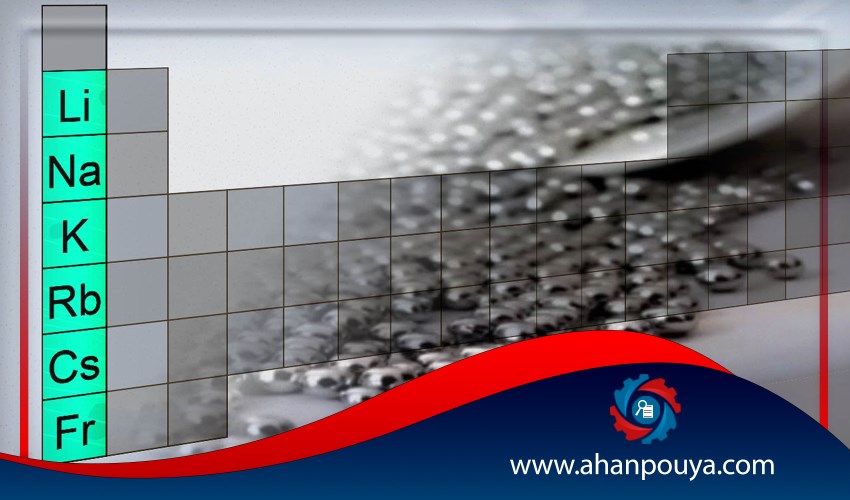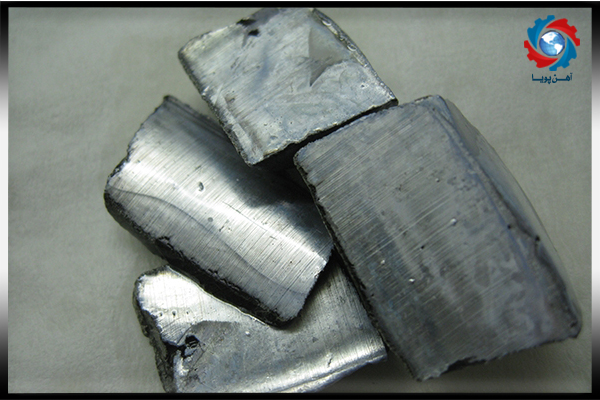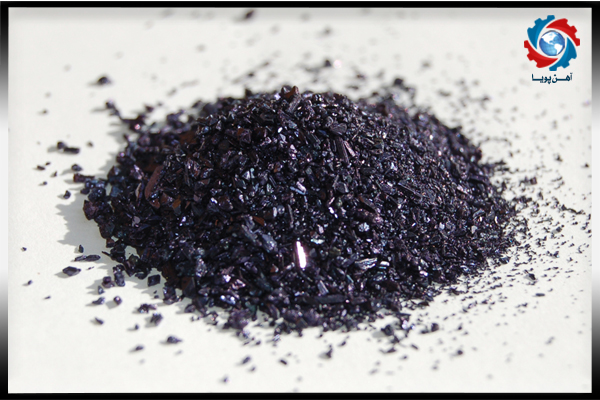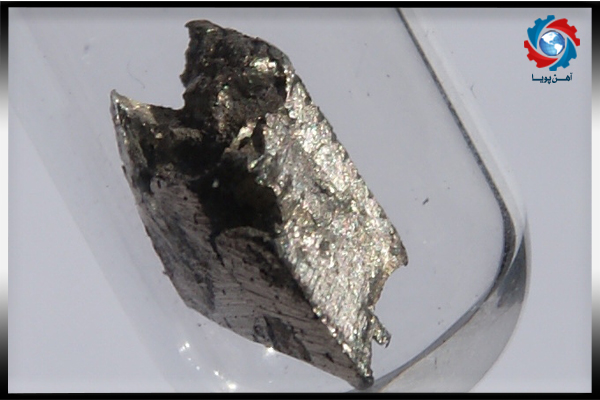
The elements of the first group of the periodic table , with the exception of hydrogen metals , are called alkali metals . The reason for excluding this gas is its very different properties with these elements . In water ash solution, the existence of alkali metals compounds (first group elements)has led to solution to be alkali and solve fats in it . When the ancients realized this , they called the first group of Mendeleev table alkali metals .
Alkali metals are also called block S elements and lithium family elements . Due to the strong reaction of alkali metals ( readily form positive ions ) , they are not found as elements in nature .
These metals are silver and so soft that they are easily cut with knives . Alkali metals are :
Element 3 : Lithium (Li)
Element 11 : Sodium (Na)
Element 19 : Potassium (K)
Element 37 : Rubidium (Rb)
Element 55 : Caesium (Cs)
Element 87 : Francium (Fr)
They have a bright surface and because they have only one electron in their valence layer , they have high reactivity power . That is why they are not found freely in nature but in combination with other elements .
Sodium for example is found in the form of NaCI ( halite ) in seawater and potassium in the form of KCl in the mines . Among these metals , francium has radioactive properties and is rare in nature . Other important applications of these elements include sodium compounds in salt formation , lithium in drug compounds , cesium and rubidium in atomic clocks and potassium in the role of the electrolyte .
When alkali metals are exposed to air , they darken because of oxidation . They react when they contact the water . Some would even explode when touching water . These are good conductors for electricity current and heat and these metals have lower density in comparison with other metals .

In normal conditions , lithium is lighter than all of the metals . Lithium is only represented in the combination of compounds due to the high reaction capability . Sodium is a silvery white metal and is soft enough to be cut with knife at room temperature . Potassium is only ionic salt in nature . Potassium is found as a solution in seawater .
Rubidium , found in 1861 , when burns in fire , it gives a purplish color . Francium is the last discovered element in nature and is extremely rare . Scientists estimate there are only 20 - 30 grams of it in the earth .
Of these properties can be named the melting point , the boiling point , as well as their low density . As the density of lithium , sodium and potassium is lower than the water density . Alkali metals show different colors in front of the flame . Sodium makes the color of flame yellow , lithium red , and potassium makes the flame purple . What the flame does is that it provides the necessary energy to excite the capacity element of electron . The energy has a particular wavelength in the visible region that causes the flame to be colorful .
Alkali metals have also low evaporation , melting and sublimation enthalpy . The atomic radius in this group increases with the motion from above to the bottom of the table . Electron order of its valence layer is as ns1 .
As mentioned , these elements have an electron in their valence layer . Thus , they intend to make compounds with other elements by losing this single electron . As far as these metals cannot be held in open air , since these are oxidized and darkens with oxygen . Therefore they should be kept under petroleum or paraffin or inert gases , but keeping them in water is not possible due to the formation of alkaline hydroxide with water . The combination of these elements with halogens creates metal halides .
● Now that we discussed about the totality of alkali metals , it is time to discuss more about each of them briefly .
Lithium is considered as the lightest alkali metal . This element has the lowest tendency to participate in chemical reactions with other alkali metals . In contrast , due to its small cations , it can be more covalent by polarization of anions . The covalent compounds can be named LiF, LiBr, Li2S, Li2C2, and other examples .
This element also shows a different behavior due to the high atomic mass . This high mass causes the movement of electrons at very high speeds up to a fraction of the speed of light , which makes the effect of relativity more specific .
Sodium is highly reactant and is never found free in nature . If we throw in the water, it sinks into the water , breaks down water , releases hydrogen and creates hydroxide . This material is instantly ignited in reaction to the water, but it does not ignite in normal room temperature below 388 Kelvin . The color and formation of sodium varies in high pressure .
Potassium is placed in the category of alkali metals and is then the lightest metal after lithium . Potassium is soft and can be cut with a knife . Immediately after being cut , it shows silver shine in its surface .
Potassium is one of the most reactant metals to electricity . Potassium is rapidly oxidized when exposed to air , and therefore , it must be stored in mineral oils like white oil .

Rubidium is one of the most reactant metals . t is the first alkali metal that is drowning in water , even though it is not very dense . It also shows more explosive reaction compared to lithium , sodium and potassium .
Rubidium is a soft , white metal element . This element is solid in room temperature and melts in 39°C . Rubidium is actively absorbed by plants and animals , but it does not appear to be a vital goal .
This goldish element is soft and malleable . Cesium is the most electropositive and alkali element in it has the lowest ionization potential among the elements . Cesium , along with gallium and mercury , are the only metals that are liquid in room temperature . Cesium explodes in cold water and reacts with ice in minus 116 degrees Celsius . Cesium hydroxide ( CsOH ) is the most powerful alkali and attacks glass .

Lithium , sodium and potassium unlike rubidium and cesium , which are mostly used in academic literature , have many applications . Lithium is used in lithium – ion batteries . Sodium salts is used in soaps and pure sodium is used in the production of sodium vapor lamps . Potassium is used in fertilizers , pH control of solutions , and the construction of respiratory masks . As mentioned , rubidium and cesium are used in the production of very accurate atomic clocks . Rubidium element is used in drilling mud to dig and extract crude oil . Francium element has no great application and its use limits to Spectroscopy tests .

Ahan Pouya with more than a decade of best-selling experience, adheres to professional and ethical principles in the field of selling and buying at inside and outside the borders of Iran, helping you in the steel industry.